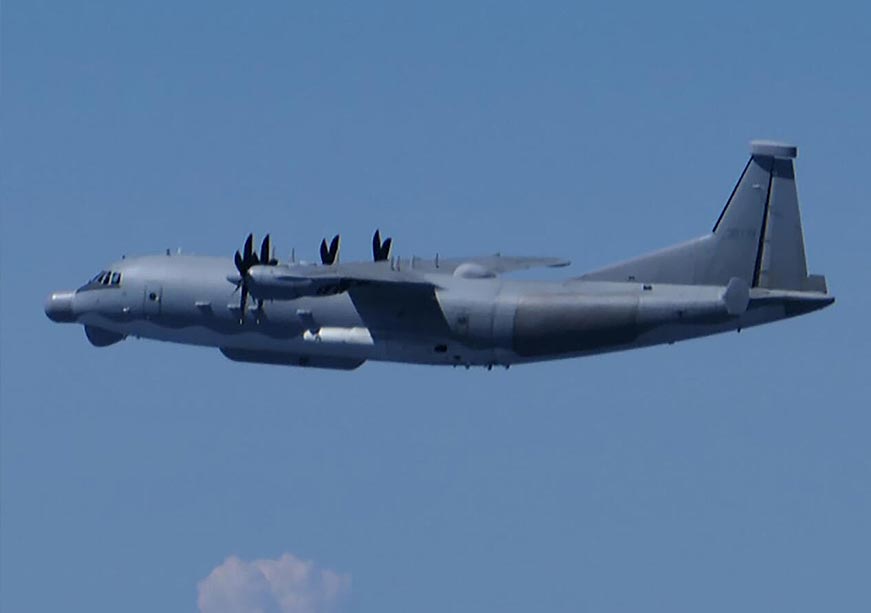China says ‘unexpected obstruction’ led to August Japan airspace breach

This file photo shows a Chinese military Y-9 spy plane flying over the East China Sea on Aug. 26, 2024.
The aircraft violated Japanese airspace the same day. China informed Japan that an “unexpected obstruction” was what caused one of its military planes to breach Japanese airspace in August, diplomatic sources said Saturday, seemingly attributing the blame to the Japanese defense force’s activities prior to the unprecedented intrusion.
Beijing has not acknowledged any wrongdoing or outlined measures to prevent a recurrence, the sources said. The “obstruction” may be a reference to the tracking of Chinese military planes by Japanese Self-Defense Forces aircraft.
This marks the first time China’s explanation for the airspace breach has been disclosed.
Japanese Prime Minister Shigeru Ishiba is expected to seek further explanation on the issue during a meeting with Chinese President Xi Jinping, which is being arranged on the sidelines of multinational gatherings slated to be held in South America in mid-November.
The Chinese military Y-9 spy plane flew over the East China Sea off the Danjo Islands in the southwestern prefecture of Nagasaki for around two minutes from 11:29 a.m. on Aug. 26 despite repeated warnings, according to the Japanese Defense Ministry.
Following the intrusion, which led the Japanese Air Self-Defense Force to scramble fighter jets, China described the situation in September as “completely accidental,” according to diplomatic sources.
Beijing did not explicitly refer to Japan or the SDF when claiming that there was an “obstruction,” they said.
The Japanese government has dismissed the Chinese claims as “nonsense,” calling on Beijing to clarify the facts, the sources said.
Tokyo has also warned that if Beijing refuses to provide sufficient information, it could further damage Japanese public sentiment toward China and complicate efforts to resolve the issue, according to the sources.
China has not voiced regret over the airspace violation.China has, meanwhile, explained to Japan that the airspace violation was “not a reaction” to the entry of the Maritime Self-Defense Force destroyer Suzutsuki into Chinese territorial waters in July, the sources said.
The captain of the MSDF vessel has been replaced, with sources saying that the Japanese government concluded that Suzutsuki inadvertently sailed for around 20 minutes in Chinese waters off the coast of Zhejiang Province on July 4.
After a Chinese nuclear-powered submarine entered Japanese waters off the Sakishima Islands in Okinawa Prefecture in 2004, Beijing openly expressed regret and unofficially told Tokyo that the incident was the result of a “technical error,” the sources said.
Katsutoshi Kawano, former chief of the SDF Joint Staff, said he is confident that ASDF planes “never” obstruct other aircraft in a way that would trigger excessive reactions.
Japan is committed to an exclusively defense-oriented policy under its war-renouncing Constitution.
Given that scrambled ASDF fighter jet pilots are basically not authorized to use weapons except in cases of legitimate self-defense or other emergencies, they “cannot hinder other aircraft,” Kawano added.
During his campaign for the ruling Liberal Democratic Party’s leadership election, Ishiba, who became prime minister on Oct. 1, proposed that Japan should consider amending laws to enable the SDF to use weapons in the event of an airspace intrusion by a Chinese military plane.




